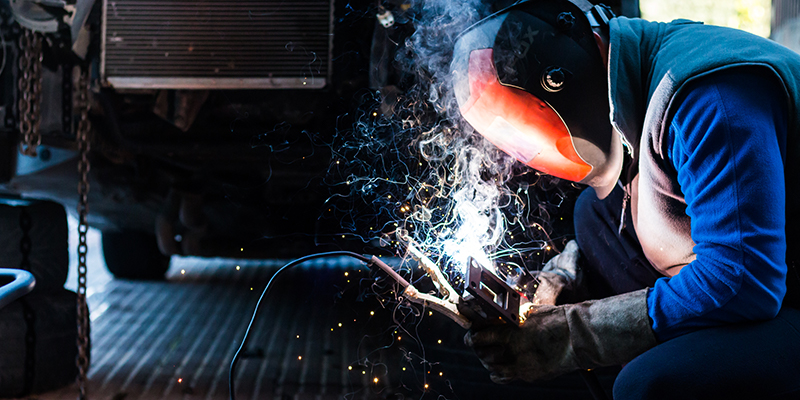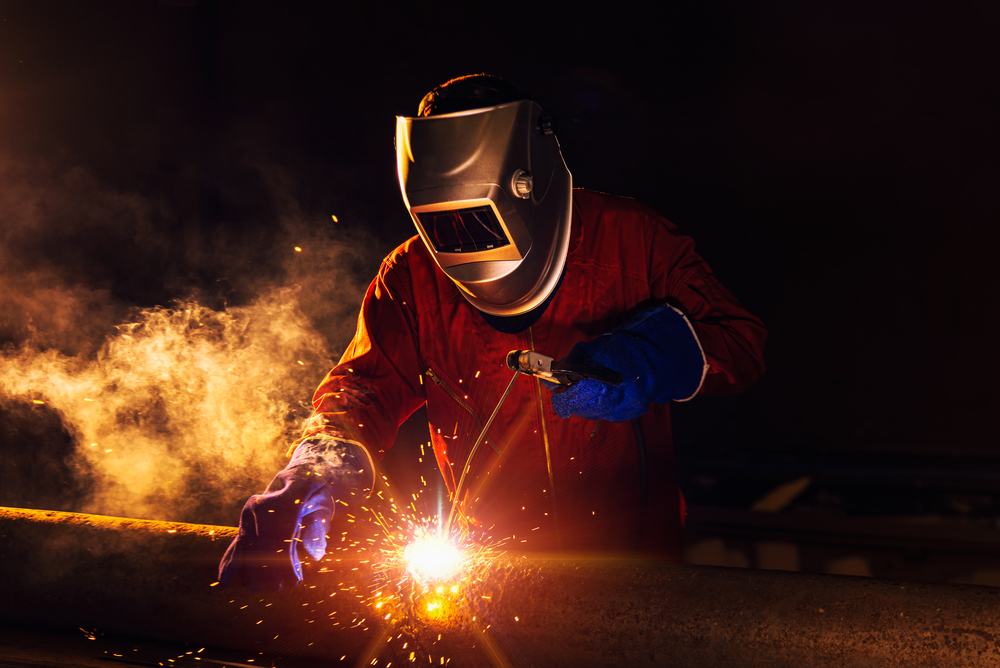Technical breakdown at welding penetration issues and Montana Mobile Welding and Repair Belgrade’s fixes
Typical Welding Fixing Issues and Exactly How to Address Them Successfully
Welding fixings commonly experience a variety of problems that can threaten the honesty of the end product. Usual issues include insufficient infiltration, porosity, and imbalance, to name a few. Each defect offers unique difficulties that need specific strategies for resolution. Recognizing these problems is vital for welders aiming to boost their skills and end results. This conversation will certainly discover these typical welding repair work problems and reliable techniques to resolve them.
Inadequate Infiltration
Poor penetration occurs when the weld steel fails to totally fuse with the base product, resulting in weak joints and prospective architectural failures. This concern usually stems from inadequate warm input, incorrect electrode angle, or improper welding speed. Welders might run into poor penetration as a result of a miscalculation of the required specifications for a certain material density or type. Additionally, contamination on the base product's surface area can prevent efficient bonding, intensifying the problem. To deal with insufficient infiltration, welders must assure proper settings on their equipment and keep a tidy work surface. Normal evaluation of welds is recommended to determine any type of deficiencies early, permitting for prompt modifications and the prevention of compromised architectural stability in welded assemblies.
Porosity
Porosity is a common flaw in bonded joints that manifests as tiny gas bubbles entraped within the weld steel. This defect can compromise the honesty of the weld, resulting in reduced strength and potential failure under anxiety. Belgrade Fabrication. Porosity normally emerges from contamination, wetness, or improper welding methods, which permit gases to escape into the liquified weld pool. To deal with porosity, welders should ensure appropriate surface area prep work, keep a tidy workplace, and make use of suitable welding specifications. Additionally, picking the appropriate filler material and securing gas can mitigate gas entrapment. Routine inspection and screening of welds can help determine porosity early, assuring prompt rehabilitative activities are taken, thus protecting the quality and reliability of the bonded framework
Imbalance
Imbalance in welding can arise from various factors, consisting of inappropriate arrangement and thermal expansion. Understanding the origin is crucial for reliable resolution. A number of improvement techniques are available to realign components and ensure architectural stability.
Causes of Misalignment
Welding misalignment commonly originates from a variety of underlying issues that can compromise structural integrity. One main cause is improper fit-up of parts before welding, which can lead to voids and irregular surfaces. Variants in thermal expansion throughout the welding procedure can also result in distortion, especially if the products being joined have different coefficients of growth. In addition, poor securing and fixturing might fall short to hold elements firmly in location, bring about movement throughout welding. Improperly maintained tools, including welding equipments and tools, may present incongruities in the weld bead, further contributing to misalignment. Ultimately, operator mistake, originating from insufficient training or experience, can also play a considerable duty in creating misaligned welds.
Improvement Techniques Offered
Addressing imbalance properly requires a combination of corrective techniques customized to the details issues available. One usual technique is using jigs or fixtures to hold parts in the right placement throughout welding, making sure regular positioning. In addition, preheating the materials can help lower distortion and improve fit-up. For significant imbalance, mechanical adjustment strategies, such as utilizing hydraulic jacks or clamps, can be utilized to remedy the placement prior to welding. Post-weld warmth therapy may additionally be needed to relieve tensions brought on by imbalance. Cautious evaluation and modification during the arrangement stage can prevent misalignment problems from becoming significant issues, advertising a smoother welding process and improving total architectural integrity.
Distortion
Distortion is an usual challenge in welding that can develop from numerous factors, including irregular heating & cooling. Recognizing the root causes of distortion is vital for executing reliable prevention techniques. Resolving this issue not only improves architectural honesty but likewise boosts the overall quality of the weld.
Reasons for Distortion
When based on the extreme heat of welding, materials often go through modifications that can bring about distortion. This sensation primarily occurs from thermal growth and contraction during the welding process. As the weld area warms up, the product expands; upon air conditioning, it acquires, which can create interior anxieties. On top of that, unequal home heating throughout a workpiece can aggravate these stresses, resulting in warping or flexing. The kind of material likewise plays a significant duty; metals with varying thermal conductivity and coefficients of development may react in different ways, leading to unpredictable distortions. Poor joint layout and poor fixturing can contribute to misalignment during welding, raising the probability of distortion. Recognizing these reasons is essential for efficient welding repair work and prevention approaches.
Avoidance Techniques
Reliable prevention strategies for distortion during welding emphasis on regulating warm input and making sure correct joint style. Preserving a consistent heat input helps to decrease thermal development and tightening, which can bring about distortion. Using strategies such as pre-heating the work surface can additionally minimize the temperature slope, promoting uniform home heating. In addition, selecting suitable joint layouts, such as T-joints or lap joints, can boost stability and lower anxiety concentrations. Implementing proper fixturing to safeguard the work surfaces in position better help in preserving alignment during the welding procedure. Staggered welding sequences can distribute warm much more uniformly, avoiding localized distortion. By applying these approaches, welders can significantly lower the chance of distortion and improve the total quality of their welds.
Fracturing
Breaking is an usual concern experienced in welding repair services, usually resulting from numerous elements such as improper air conditioning prices, product selection, or poor joint prep work. The incident of splits can substantially jeopardize the honesty of the weld, bring about possible failures throughout procedure. To resolve this concern, welders must first examine the origin causes, making certain that materials work and suitably selected for the certain application. Furthermore, regulating the cooling rate throughout the welding procedure is essential; quick cooling can induce stress and bring about splitting. Appropriate joint style and preparation additionally add to decreasing the danger. Applying these techniques can boost weld high quality and durability, ultimately lowering the probability of breaking in ended up weldments.

Incomplete Fusion
A significant concern in welding repairs is insufficient combination, which takes place when the weld steel does not adequately bond with the base material or previous weld passes - Belgrade Welding. This issue can cause weak points in the joint, potentially jeopardizing the honesty of the welded structure. Aspects adding to incomplete combination include not enough heat input, incorrect welding technique, and contamination of the surfaces being joined. To address this issue effectively, welders must ensure correct pre-weld cleansing and surface area preparation, as well as readjust their welding criteria to attain sufficient infiltration and blend. Routine examination during the welding procedure can likewise help determine incomplete combination early, allowing for timely restorative actions to boost the overall high quality of the weld
Overheating
While welding fixings can boost structural honesty, overheating presents a considerable difficulty that can cause material degradation. Too much warmth throughout welding can modify the mechanical buildings of steels, causing lowered stamina, increased brittleness, and bending. This phenomenon is especially essential in high-stress applications where architectural dependability is paramount. Determining overheating can involve visual inspections for staining or distortion, as well as monitoring temperature level throughout the welding procedure. To minimize the dangers connected with getting too hot, welders should utilize ideal strategies, such as controlling warmth input, readjusting travel rate, and using appropriate filler products. Additionally, applying pre- and post-weld heat treatments can assist recover product properties and improve the overall top quality of the repair, making sure long-term efficiency and security.
Often Asked Questions
What Are the Usual Indications of a Welding Problem?

How Can I Evaluate My Welds for High quality?
To test welds for high quality, one can utilize visual evaluations, ultrasonic screening, and radiographic approaches. Each strategy guarantees structural stability, determines here problems, and validates adherence to specified criteria, eventually boosting the integrity of the bonded joints.
What Safety Safety Measures Should I Take While Welding?
When welding, one must prioritize safety and security by using suitable individual safety devices, guaranteeing correct ventilation, securing flammable materials away, maintaining a clean work area, and knowing surroundings to avoid injuries and accidents.
Can I Repair a Weld Without Redesigning the Entire Joint?
Fixing a weld without remodeling the entire joint is feasible, depending on the damage (Montana Mobile Welding and Repair Welding). Strategies such as grinding, adding filler product, or using a welding process can successfully deal with specific problems while maintaining the bordering structure
What Tools Are Important for Effective Welding Repair Works?
Crucial tools for effective welding repair work consist of a welding machine, cord brush, mill, protective equipment, clamps, and filler materials. Each device plays an important role in making certain quality and safety throughout the repair procedure. Porosity typically emerges from contamination, dampness, or incorrect welding methods, which enable gases to escape right into the molten weld pool. Badly maintained tools, consisting of welding makers and devices, might introduce incongruities in the weld grain, more contributing to misalignment. When subjected to the extreme warmth of welding, materials usually go through changes that can lead to distortion. Splitting is a typical concern experienced in welding fixings, typically resulting from various elements such as incorrect air conditioning rates, product selection, or poor joint preparation. A substantial problem in welding repair services is incomplete blend, which occurs when the weld steel does not properly bond with the base material or previous weld passes.